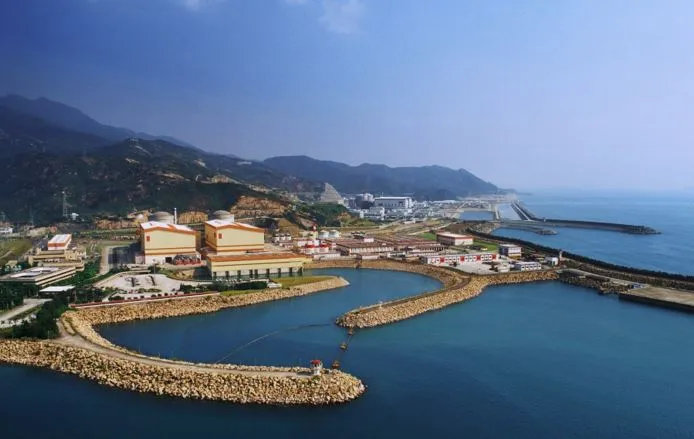
China is still king in Asia's nuclear sector
Its new build activity is about 50% of global capacity additions.
China continues to dominate nuclear new build activity globally. In 2016 new reactors were connected to the grid at Changjiang, Fangchenggang, Fuqing, Hongyanhe and Ningde, adding some 4.6 GWe, and representing about 50% of all new nuclear capacity additions worldwide, according to a report by the World Nuclear Association.
The country continues to benefit from series nuclear construction, with all new reactors connected in 2016 built within six years. The strong impetus for developing
new nuclear power in China comes from the need to improve urban air quality and reduce greenhouse gas emissions.
The government’s stated long-term target, as outlined in its Energy Development Strategy Action Plan, 2014-2020, is for 58 GWe nuclear capacity by 2020, with 30
GWe more under construction.
Here's more from World Nuclear Association:
China continued its nuclear expansion in 2016, with large units at Fangchenggang and Tianwan commencing construction. At the time of writing, the country has a total capacity of 23 GWe under construction.
In March 2017 the National Energy Administration announced that it would complete construction of five units in 2017, and begin construction of eight more.
In Japan, 2016 saw muted progress in reactor restarts. By the end of the year, five reactors had passed Japan’s Nuclear Regulation Authority (NRA) inspections confirming that they met post-Fukushima standards, and a further 19 reactors had applied for clearance.
However, of Japan’s 42 operable reactors, only Kyushu Electric’s Sendai 1, Shikoku’s Ikata 3 and Kansai Electric’s Takahama 4 are currently online.
The International Energy Agency, the Institute of Energy Economics and the Japan Atomic Industry Forum have all called for a sustained effort in 2017 to reinstate production from idled reactors, reiterating the essential role that nuclear power needs to play in enabling the country to meet its climate obligations.
Since the start of 2017 regulatory approval rates appear to have picked up pace, with the NRA clearing two reactors in Genkai for restart in January, and the Osaka High Court lifting an injunction that had prevented the restart of units 3&4 at Takahama following NRA clearance in 2015.
In 2016, Kansai Electric Power became the first operator to be granted extended, 60-year operating licences under the revised regulations at its Takahama and Mihama plants.
The first Korean-designed APR-1400, unit 3 at the Shin Kori nuclear power plant, was connected to the grid by Korea Hydro and Nuclear Power in January 2016. The unit officially entered commercial operation on 12 December 2016.
It is the reference plant for the Barakah project, the UAE’s first nuclear power plant, and a further three APR-1400 reactors in Korea are scheduled to be online within six years.
Unit 2 of India’s Russian-built Kudankulam nuclear power plant was connected to the grid in August 2016, taking the country’s total number of operating reactors to 22. The Indian government is committed to growing its nuclear power capacity as part of its massive infrastructure development programme, and shortly after the successful commissioning of Kudankulam 2, India and Russia launched the second phase of the nuclear power plant’s construction in October.
Over the course of 2016 the Indian government took a series of steps designed to catalyse sector investment. In January the country signed a preliminary deal with EDF to build six EPR reactors in Jaitapur; in February the country removed joint venture restrictions stipulated in its Atomic Energy Act to help the state-owned operator Nuclear Power Corporation of India Ltd (NPCIL) secure funding for new projects; and in March the government’s new budget included an additional $442 million of support for new nuclear power projects over the next 15-20 years. In May 2017 ten indigenous design units won cabinet approval for construction.



















 Advertise
Advertise







